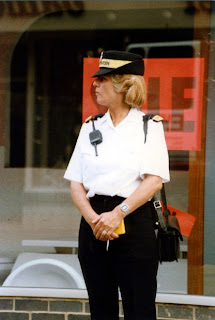- The Latin name for the parsnip plant is Pastinaca sativa. It is related to Carrots (well, you can see the family resemblance there!) and parsley.
- The word parsnip doesn't come from a combination of Parsley and Turnip, as some people believe. It comes from the Middle English pasnepe, which derives from a Latin word for a type of fork. The generic name, Pastinaca, is probably derived from either the Latin word pastino, meaning "to prepare the ground for planting of the vine" or pastus, meaning "food". The species name, sativa, means "sown".
- The parsnip is native to Eurasia and people have been cultivating them since antiquity. The Romans liked them - the Emperor Tiberius was willing to accept parsnips as payment of a tribute owed to him by Germany. The Romans believed they were an aphrodisiac. However, written references to parsnips from those times need to be interpreted with care, as they could be confused with carrots.
- Italians today aren't so keen. They are mostly fed to Pigs in Italy today, in particular, the pigs bred to make Parma ham.
- The root is fine to eat, but the sap of the plant is toxic, so care must be taken handling the stems and leaves. The sap contains chemicals which evolved to protect the plant from being eaten by animals. Parsnip sap can cause a condition similar to that caused by poison ivy – a chemical burn which can cause redness, burning, and blisters.
- People used to believe that eating parsnips was a remedy for toothache or tired feet. This isn't true.
- When exposed to frost, some of the starch in the root turns to sugar, making the vegetable sweeter. In fact, parsnips were a source of sugar before cane and beet sugars were available.
- A 100g parsnip contains 75 Calories and 375 mg of Potassium. Most parsnip cultivars are about 80% Water, 5% sugar, 1% protein, 0.3% fat, and 5% fibre. They also contain several of the B-group vitamins and Vitamin C, but these can be lost once the vegetable is peeled and cooked.
- The most common cultivar of parsnip is called “Student”. This cultivar is actually the result of an experiment by James Buckman at the Royal Agricultural College in 1859. His purpose was to show how the plants could be improved by selective breeding.
- As well as the obvious use for parsnips as one of the veg in a Sunday roast or Christmas dinner, they can be made into crisps and even Wine. Parsnip wine tastes similar to Madeira.
More details about my books. Follow this link if you like Superheroes, Psychics and/or quirky short stories.
I've listed the themes each novel touches on here for easy reference.
Like my author page on Facebook for news on new books and blog posts.
Check out my Writing blog












